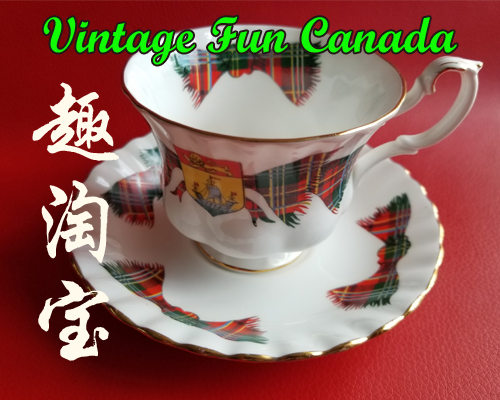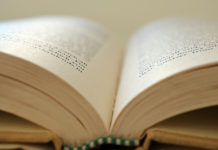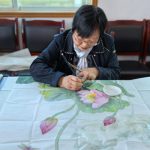
远在安省伦敦的朋友给我捎来了前一天在当地淘到的宝贝。尽管里面不乏有英国骨瓷老牌Royal Albert的两套瓷器,但笔者还是一下子被那套德国产的,并不很是熟悉的茶具所吸引,有一种相见恨晚之感。迫不及待的翻过杯底一看,上面除了标徽之外,标徽顶部写着Bavaria,而底部写着Schumann Arzberg Germany。
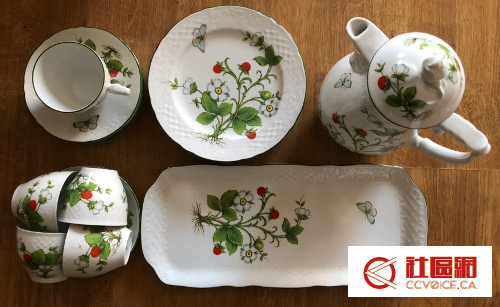
这不是完整一套,但是享用还是很不错的
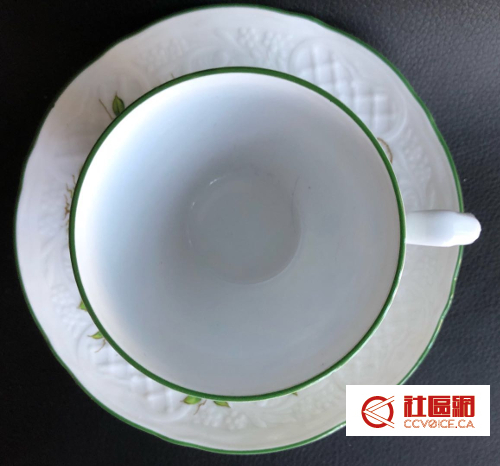
俯视茶杯与茶盘
通过这点文字,笔者通过网络搜寻,对这套茶具的历史,特别是这个品牌Arzberg肃然起敬。对于该品牌的文章推介,笔者附上英文原文与大家分享。在这里,笔者想要简单聊聊其中几点粗浅的感受。
第一,今天的古董爱好者在搜寻瓷器时,一般都会去看上面的印章或标记。其实在最初的瓷器上,并没有任何标识,而标识的形成可能还有通过的经历。比方说,Arzberg本身,当年德国瓷器在英国大为流行时,没有想到英皇室不高兴了(呵呵,这可能与帝国的衰落关联吧!)。英皇室要求德国产的瓷器都必须加上Made in Germany的标记,寄希望与皇室子民不再去购买。但没有想到的是,子民的行动更出乎意料之外,将Made in Germany作为高级品牌的标志,估计这与今天许多追求品牌的华人心理是一样的。
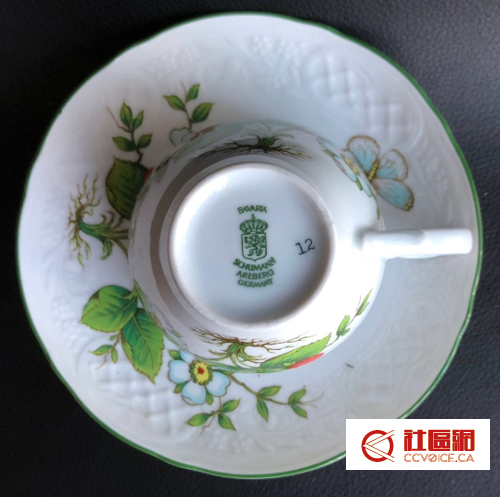
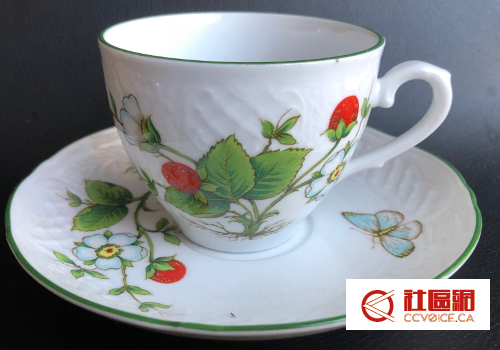
第二,在创造与生产中,假若您认为现有物品不够完善,您不必要浪费时间去抱怨和指责,最为有效的方式就是自己去创造和完善它。这就是Arzberg在发展道路上能够如此持续的原因,也就印证了中国那句老话“长江前浪推后浪,一浪更比一浪强”。试想想,假若今天的人们多一份创造,少一份抱怨,这个世界不是要完美许多吗?
第三,任何事物发展都有起落高低之分,平坦的阳光大道只有在歌声和梦想中找到。在遇到挫折与困难时,能够跳出来逆向思维,尽管笔者不想去奉承某名人所言,“在风口,猪也能飞起来!”但是,危机危机,就是机会与危险并存。假若您还在困扰,那为何不换一个角度,退一步去思考呢?尽管不是海阔天空,但可能就在那一刹那,找到自己苦苦在寻觅之路。
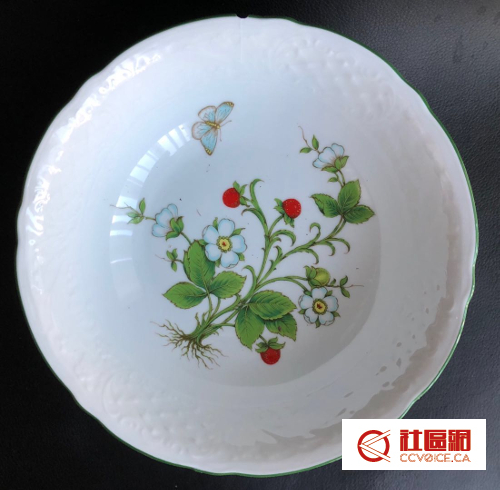
一个大碗,很可惜有一个缺口
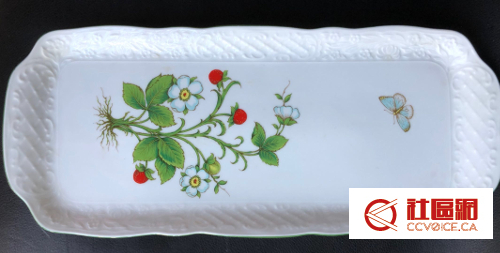
我称之为点心盘
估计有些读者有些不爽了,一套破瓷器,您有那么多啰嗦吗?呵呵,这可能就是趣淘宝的乐趣所在吧!要不,您也赶紧加入我们的行列?!而茶具本身的妩媚与精致,大家还是看图吧!
Arzberg writes history. Arzberg has stories to tell. Arzberg is a whole history in itself …
1887 The Brits are disgruntled
The Queen is not amused: German products becoming increasingly competitive. So Great Britain passes the “Merchandise Mark Act” which means that products from Germany must henceforth bear the description “Made in Germany” – in the hope that people will avoid them. But what is conceived as a warning very soon becomes a significant seal of quality. The Arzberg brand’s own “Made in Germany” history also began around this time. The year was 1887.
1931 Impractical terrines
“If you’re such and expert on what a good terrine should look like, then go and make one,” Fritz Kreikemeier, director of the Arzberg porcelain factory, challenges the young graduate engineer Hermann Gretsch. Gretsch has criticised the fact that none of the terrines on the market allows the last remnants of food to be ladled out, never mind having an attractive shape. Gretsch goes off and designs. And the result is convincing. The Form 1382 marks the start of the Frankish porcelain manufacturer’s rise to become a successful frontrunner of modern and functional everyday porcelain. This was in 1931.
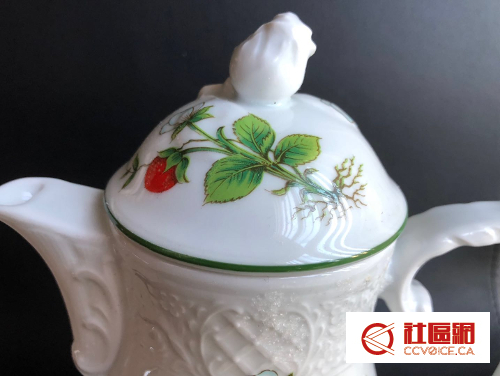
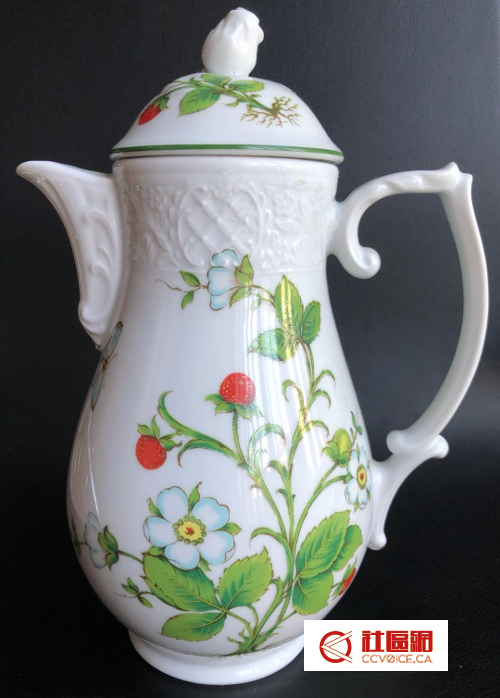
茶壶并没有破损,只是光线问题
1954 Good form
The term “designer” doesn’t yet exist in the 60s. But there is talk of the work being created by talented craftsmen with a particular feel for aesthetic styling. Many are striving to achieve good form. Heinrich Löffelhardt succeeds. His Form 2000 is a design which – according to Löffelhardt’s own artistic demands – “is such that it’s worth reproducing a thousand times over”. The Form 2000 becomes a bestseller. At the same time, the Museum of Modern Art in New York takes note of the design work coming out of the house of Arzberg, and includes the Form 1382, created by Löffelhardts’s predecessor Gretsch, into its permanent exhibition. Arzberg is heading to become the international design brand for porcelain. The year is 1954.
2001 Exclusive commissions
There’s no need to turn over the porcelain in the federal chancellery and look underneath to see who it was made by – only Arzberg is authorised to produce the crockery with its golden edging and vignette of Germany’s coat of arms, the federal eagle: at the end of the sixties, the Frankish porcelain producer provided the federal chancellery with a special edition of the Heinrich Löffelhardt Form 2000. To mark Löffelhardt’s100th birthday, the federal chancellery was presented with an exclusive and specially created set of tableware and some new items. This was in 2001.
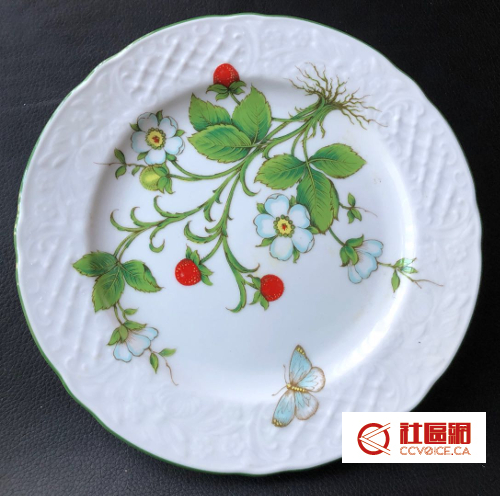
漂亮的生菜盘
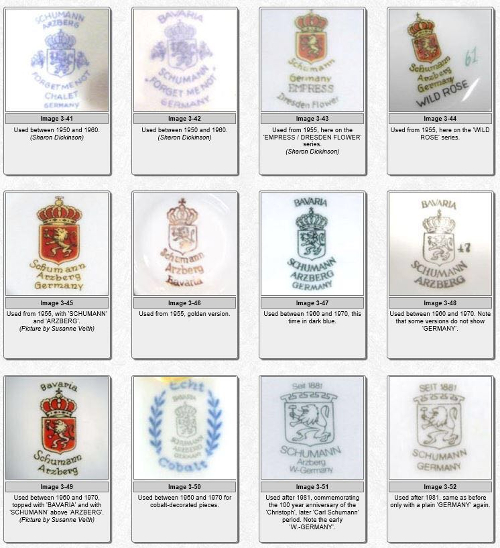
从标徽看年代,50年前生产的
2003 Turbulent times
There’s a saying in Germany that breaking lots of pots heralds good fortune. The German porcelain industry has by now long been living on the economic miracle, and securing its international reputation over the decades by producing high quality and discerning design. With reunification and globalisation – meaning cheaper imports from Eastern Europe and Asia – the porcelain market is shattered. And then put back together again: Arzberg, as part of Hutschenreuther AG, is integrated with Winterling AG. SKV-Porzellan-Union then acquires this design brand which is steeped in tradition. Helmut Sättler, Arzber’s managing director since 1997, and the internationally renowned designer Peter Schmidt, later acquire the shares in Arzberg-Porzellan GmbH. This was in 2003.
2006 Recipes for success
Eat at Kolja Kleeberg’s gourmet restaurant the “Vau” in Berlin and you’ll soon start counting. Because this top chef’s recipe for success is “Never present more than three things on the plate”. Work only with the essence – but then to perfection. And this creative gourmet makes no exception when it comes to tableware: he serves his food on award-winning Form 2006 porcelain by international top designers Peter Schmidt. Such creativity sees Arzberg rediscover the value of the essence. This was 2006.
2009 A clear course
Most creatives prefer not to burden themselves with excessive decoration. They seek authentic beauty – both in their work and in their own life. So it’s hardly surprising that many designers, architects and photographers so often serve their food on Arzberg porcelain. In their circles, Arzberg forms a kind of cult: “Because the brand stands for the interplay between interesting design and functionality, which as a consumer you wouldn’t want to do without – and not least because it’s something you can identify with” as head designer Heike Philipp puts it. And porcelain expert Helmut Sättler is quite clear: “Arzberg isn’t just about selling porcelain. It’s about history, design and quality. Porcelain is not simply an everyday item for the dinner table – it’s an expression of style, indulgence and joy in setting a table.” Arzberg is the brand in porcelain design. Genuine and true. Relative to life. This was 2009.






